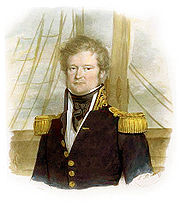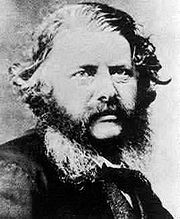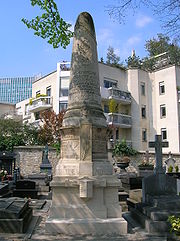
Versailles train crash
Encyclopedia

Meudon
Meudon is a municipality in the southwestern suburbs of Paris, France. It is in the département of Hauts-de-Seine. It is located from the center of Paris.-Geography:...
Bellevue (between Versailles
Versailles
Versailles , a city renowned for its château, the Palace of Versailles, was the de facto capital of the kingdom of France for over a century, from 1682 to 1789. It is now a wealthy suburb of Paris and remains an important administrative and judicial centre...
and Paris
Paris
Paris is the capital and largest city in France, situated on the river Seine, in northern France, at the heart of the Île-de-France region...
), France
France
The French Republic , The French Republic , The French Republic , (commonly known as France , is a unitary semi-presidential republic in Western Europe with several overseas territories and islands located on other continents and in the Indian, Pacific, and Atlantic oceans. Metropolitan France...
. Following the King's fete celebrations at the Palace of Versailles
Palace of Versailles
The Palace of Versailles , or simply Versailles, is a royal château in Versailles in the Île-de-France region of France. In French it is the Château de Versailles....
, a train returning to Paris crashed at Meudon
Meudon
Meudon is a municipality in the southwestern suburbs of Paris, France. It is in the département of Hauts-de-Seine. It is located from the center of Paris.-Geography:...
after the leading locomotive broke an axle. The carriages behind piled into the wrecked engines and caught fire. At least 55 passengers were killed, including the explorer Jules Dumont d'Urville
Jules Dumont d'Urville
Jules Sébastien César Dumont d'Urville was a French explorer, naval officer and rear admiral, who explored the south and western Pacific, Australia, New Zealand and Antarctica.-Childhood:Dumont was born at Condé-sur-Noireau...
. This accident is known in France as the "Catastrophe ferroviaire de Meudon". The accident was the first railway accident in France and one of the first in the world.
Death of Dumont d'Urville

Phrenology
Phrenology is a pseudoscience primarily focused on measurements of the human skull, based on the concept that the brain is the organ of the mind, and that certain brain areas have localized, specific functions or modules...
. He had taken a cast of Dumont's head before the accident and was able to recognise his remains by its shape and characteristic lumps. This was an early example of forensic identification
Forensic identification
Forensic identification is the application of forensic science, or "forensics", and technology to identify specific objects from the trace evidence they leave, often at a crime scene or the scene of an accident. Forensic means "for the courts"....
. Dumont was buried in Montparnasse Cemetery
Montparnasse Cemetery
Montparnasse Cemetery is a cemetery in the Montparnasse quarter of Paris, part of the city's 14th arrondissement.-History:Created from three farms in 1824, the cemetery at Montparnasse was originally known as Le Cimetière du Sud. Cemeteries had been banned from Paris since the closure, owing to...
in Paris
Paris
Paris is the capital and largest city in France, situated on the river Seine, in northern France, at the heart of the Île-de-France region...
. The accident led to the abandonment of the then-common practice of locking passengers in their carriages in France. It was among the first major rail disasters causing multiple deaths.
Sequence of Events
The events are described in an 1879 account of the disaster in Notes on Railroad Accidents by Charles Francis Adams Jr published by G.P. Putnam's Sons :"At half past five o'clock these had stopped playing, and a general rush ensued for the trains then about to leave for Paris. That which went by the road along the left bank of the Seine was densely crowded, and so long that two locomotives were required to draw it. As it was moving at a high speed between Bellevue and Meudon, the axle of the foremost of these two locomotives broke, letting the body of the engine drop to the ground. It instantly stopped, and the second locomotive was then driven by its impetus on top of the first, crushing its engineer and fireman, while the contents of both the fire-boxes were scattered over the roadway and among the debris. Three carriages crowded with passengers were then piled on top of this burning mass and there crushed together into each other. The doors of these carriages were locked, as was then and indeed is still the custom in Europe, and it so chanced that they had all been newly painted. They blazed up like pine kindlings. Some of the carriages were so shattered that a portion of those in them were enabled to extricate themselves, but the very much larger number were held fast; and of these such as were not so fortunate as to be crushed to death in the first shock perished hopelessly in the flames before the eyes of a throng of lookers-on impotent to aid. Fifty-two or fifty-three persons were supposed to have lost their lives in this disaster, and more than forty others were injured; the exact number of the killed, however, could never be ascertained, as the piling-up of the cars on top of the two locomotives had made of the destroyed portion of the train a veritable holocaust of the most hideous description. Not only did whole families perish together,—in one case no less than eleven members of the same family sharing a common fate,—but the remains of such as were destroyed could neither be identified nor separated. In one case a female foot was alone recognizable, while in others the bodies were calcined and fused into an indistinguishable mass."
Investigation


William John Macquorn Rankine
William John Macquorn Rankine was a Scottish civil engineer, physicist and mathematician. He was a founding contributor, with Rudolf Clausius and William Thomson , to the science of thermodynamics....
showed that they had failed by brittle cracking across their diameters, a problem now known as fatigue
Fatigue (material)
'In materials science, fatigue is the progressive and localized structural damage that occurs when a material is subjected to cyclic loading. The nominal maximum stress values are less than the ultimate tensile stress limit, and may be below the yield stress limit of the material.Fatigue occurs...
. At the time, there was considerable confusion about the problem. A myth grew up that the metal "re-crystallised" in some strange way, thereby weakening the product. It was to be some years before Rankine's work was recognised as being correct. It is likely that the failure of the axle on the front locomotive at Versailles was also caused by the same problem of fatigue. The problem of broken axles was widespread on all railways at the time, and continued to occur for many years before engineers developed better axle designs. The pioneering work of August Wohler
August Wöhler
August Wöhler was a German engineer, best remembered for his systematic investigations of metal fatigue.Born in the town of Soltau, the son of local teacher Georg Heinrich Wöhler showed early mathematical ability and won a scholarship to study at the Technische Hochschule in Hannover, under the...
later in the century helped improve testing of axles, and so increase axle life.

See also
- Fatigue (material)Fatigue (material)'In materials science, fatigue is the progressive and localized structural damage that occurs when a material is subjected to cyclic loading. The nominal maximum stress values are less than the ultimate tensile stress limit, and may be below the yield stress limit of the material.Fatigue occurs...
- Lists of rail accidents
- List of accidents and disasters by death toll

